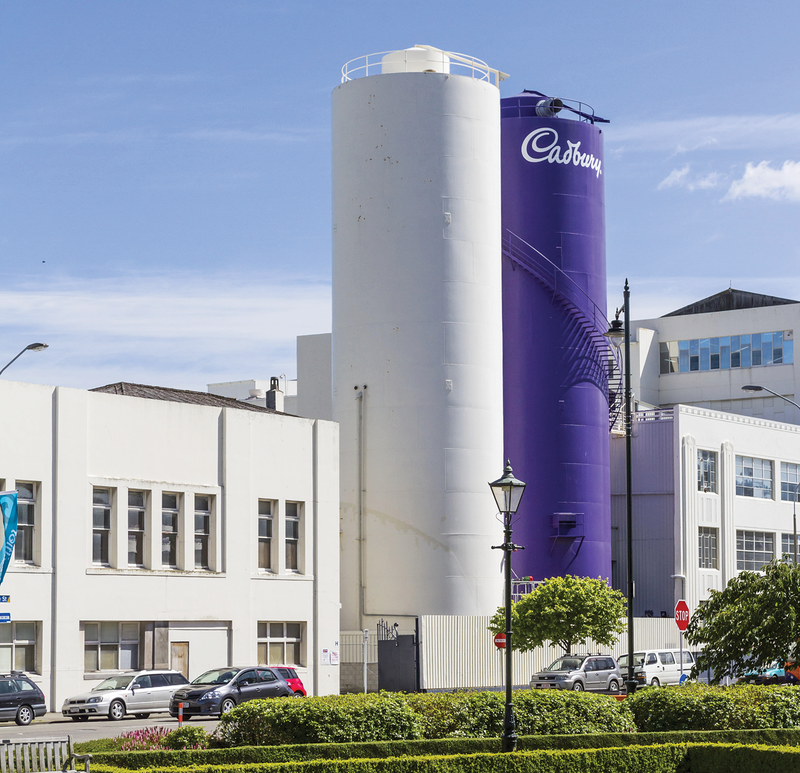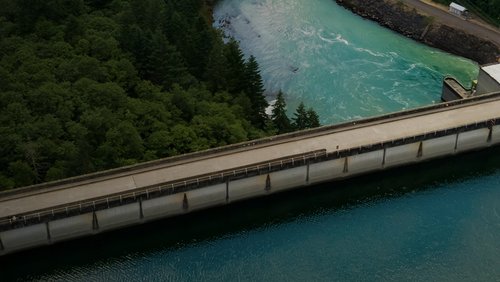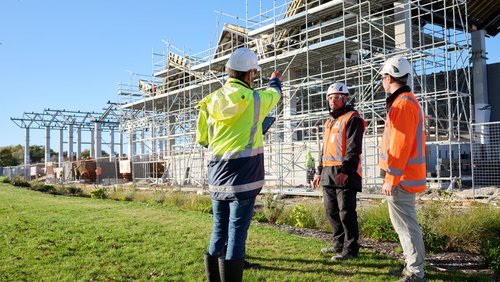23 Sep 2019
With a growing awareness around safety, sustainability and environmental protection, the demolition, deconstruction or repurposing of buildings can present a myriad of technical challenges. These projects can also be emotive, but unique opportunities do arise.
Some buildings have a significant place in the community because of their heritage, says Carron Blom FEngNZ, Managing Director of Anguillid Consulting Engineers and Scientists.
“Sometimes many generations of people are built around them, so there can be a sense of grieving when they come down.”
If a building is going to be demolished, sustainability will always come into play. Besides investigating ways of saving the building, this can involve looking at ways to involve the community at the deconstruction process. For example, inviting the art community in at the planning stage to look at sequestering or repurposing materials. It can be about using some of the building parts and equipment in a creative way that celebrates the heritage of the site, Carron says.
“Part of it is capturing the stories. If an artist goes into a scrapyard they will just see scrap. If they go into a factory they can actually capture the story of what it is… it’s not just a piece of art – it’s a piece of art with a piece of New Zealand in it.”
A glass (and a) half full
One of the more high-profile decommissions in recent years was Dunedin’s Cadbury chocolate factory. David Bettis, a former reliability engineer at the plant, was involved in the massive task of decommissioning the machinery and preparing it for collection and transfer to the company’s Melbourne plants. It was a huge challenge technically. From an employee perspective, David also witnessed the emotional side of the announcement, and the eventual wind-up of one of the country’s most iconic factories.
“I think there was a lot of shock to be honest,” he says of the closure announcement.
“Some had been working there for 35 years plus – some started there straight from school.
“It was a bitter pill to swallow for some, because the factory was performing. But as we understood it, this was more to do with the physical location, transport costs, etcetera.”

The former Cadbury factory in Dunedin. Photo: KC Hunter/Alamy
Cadbury inevitably came under fire, but David says the company put a lot of thought into its exit process and deserves credit for that.
“They basically wanted everyone to leave there with a qualification relating to what they could do,” he says.
Training organisations were enlisted to guide staff through formal qualification procedures and CV workshops were held to help prepare them for future job opportunities. Formal graduation ceremonies followed, and it helped many in finding new jobs. David says some staff understandably left Cadbury soon after learning of the closure but the training was a good way to keep others engaged to the end.
“It gave us something to focus on.”
While the impact lingers, former staff have secured jobs locally and around the country. Others followed the plant to Melbourne. David, now a lecturer at Otago Polytechnic, says while there isn’t a huge amount of manufacturing left in Dunedin, former Cadbury engineers have generally managed to secure work at other factories and businesses.
Some demolition work has taken place at the Cadbury site since the buildings were cleared. It is set to become part of Dunedin’s new hospital, with stakeholders currently working through plans as to how and when building work will proceed. The project will involve a lot more demolition but Cadbury’s old dairy building facade, with its art deco style frontage, was recently restored. All going well it will remain as a lasting memory of a business that had roots in Dunedin dating back to the 1800s.
It was a bitter pill to swallow for some, because the factory was performing. But as we understood it, this was more to do with the physical location, transport costs, etcetera.
Harbour-side challenges
When the Kaikōura earthquake struck in 2016, one of the many areas extensively damaged was Wellington’s CentrePort. The demolition and deconstruction of buildings on the compromised port land continues today. When it came to pulling down the port’s four 10,000m2 cold stores, due to the reclaimed land subsiding beneath them, there was no heritage value, but there were significant environmental challenges.
CentrePort Infrastructure Project Delivery Manager Greg Patience says plenty of thought went into working out how to deconstruct the huge cold stores with their notoriously undesirable polystyrene panels in a very windy spot adjoining the harbour.
Greg says the agreed methodology needed to be flexible to achieve a successful project.
“After three days of deconstruction work, the methodology changed to a smarter and more efficient way of dropping these panels to contain the polystyrene,” he says.
Methodology work, led by Ceres Environmental Services, included soaking the floors with water to contain rogue polystyrene particles. With the constant use of vacuum cleaners, scrim fitted to the perimeter fence, and daily checking of all loaded trucks leaving the site, a tricky operation was carried out successfully. Water soaking was a method also used more recently to contain office papers during the early stages of stripping out the nearby Statistics House. Greg says when it comes to health and safety, demolition and deconstruction often involves working in compromised buildings in an earthquake zone, so where possible strip-out works are planned with contractors spending minimum amounts of time inside.

Demolition of CentrePort's cold store buildings on Wellington's waterfront. Photo: CentrePort
Unfortunately, the CentrePort team is getting used to demolition and deconstruction planning, having already got through the majority of a 20-building demolition programme. When the former BNZ building is demolished, approximately 98 percent of it by weight will be recycled and repurposed – to the extent that concrete and glass crushed off-site will come back and be used for the new Kings Wharf project nearby. Other items will be repurposed in the CentrePort office and operational accommodation, as well as in other entities in the city.
With the cold stores, disposal of the polystyrene panels was achieved through Quality Demolition and Contracting. This company, along with Macauley Metals, has been recycling what they can from CentrePort. Quality Demolition’s Shane Gray says landfills don’t welcome the lightweight, space-invading polystyrene from cold stores but he’s imported a compressing machine to deal with it.
“It basically compresses the polystyrene 30 to one – 30 cubic metres becomes one,” he says.
Shane says he isn’t aware of such a machine in New Zealand, and while its purchase was to minimise impact on landfills, investigations are continuing to find possible ways of repurposing the compressed materials – potentially overseas.
Protecting the heritage
The Heritage Christchurch hotel is a flagship example of what can happen when there's strong community will to stop demolition of iconic buildings.
Formerly the Old Government Building, on Christchurch’s Cathedral Square, the prominent Italian High Renaissance-style building got a new lease of life in the 1990s.
It was a fix-up that required full earthquake strengthening and refurbishment with minimal aesthetic impact.
Driven largely by a public outcry following talk of demolition, the Christchurch City Council bought the building for preservation. At the time, the building cost a little under $750,000, with strengthening and refurbishment work costing roughly $3.75 million. Engineers Holmes Consulting were brought on board to assess strengthening requirements and found the building's prognosis was good.
The previously unreinforced masonry building was seismically retrofitted to 100 percent of the New Building Standard and the refurbishment brought it back to its former glory, with key heritage features identified and retained.
Strengthening systems were carefully planned to provide both strength and stiffness compatibility, while creating valuable extra usable space through selective demolition and replacement of less heritage-critical areas.
Holmes Group Limited Chief Executive John Hare FEngNZ CPEng IntPE(NZ) says when buildings are strengthened there can be no guarantee of outcomes.
“Particularly when you get an event as big as the February 2011 earthquake, which was beyond code.”
He admits engineers can feel nervous when approaching old buildings after significant events to see how strengthening work has held up.
“In this case we were very pleasantly surprised.”
While some repairs and strengthening were required, there were no significant failures.
“As far as we were concerned, it was a great success,” John says.
“The approach that was taken, and the way it was implemented, meant that we had a building that was good not just for life safety but achieved a critical outcome overall for the protection of investment.”
From a heritage perspective, planning was a collaboration.
“It was a good interaction between heritage advisors and engineers as to what we could do in terms of exploring options and prioritising what we keep and what we modify.”
The building has been a prominent part of Christchurch City for more than 100 years and with any luck, will be around for generations to come.




